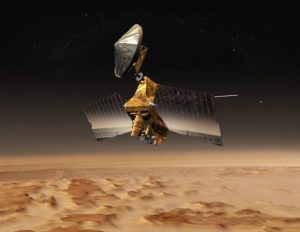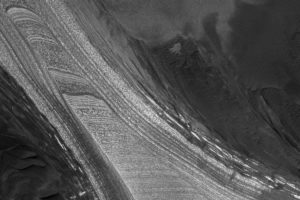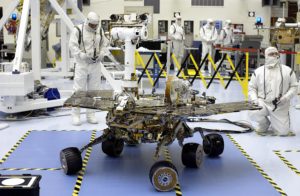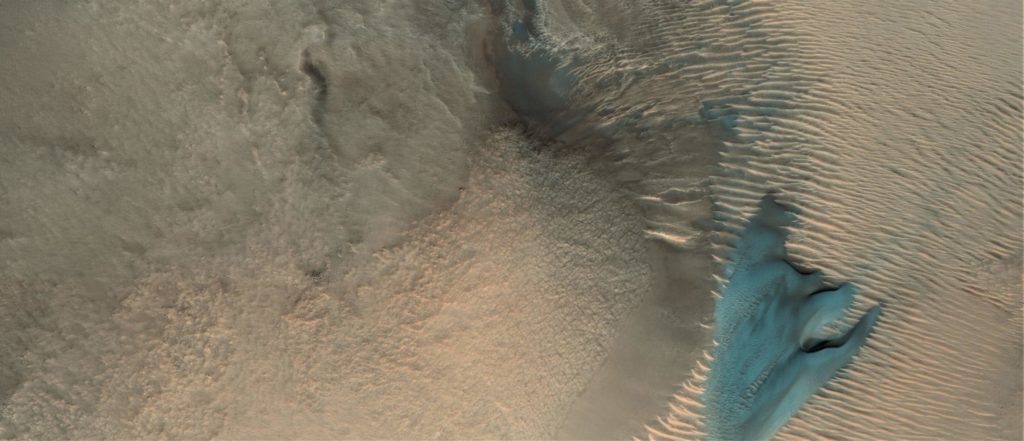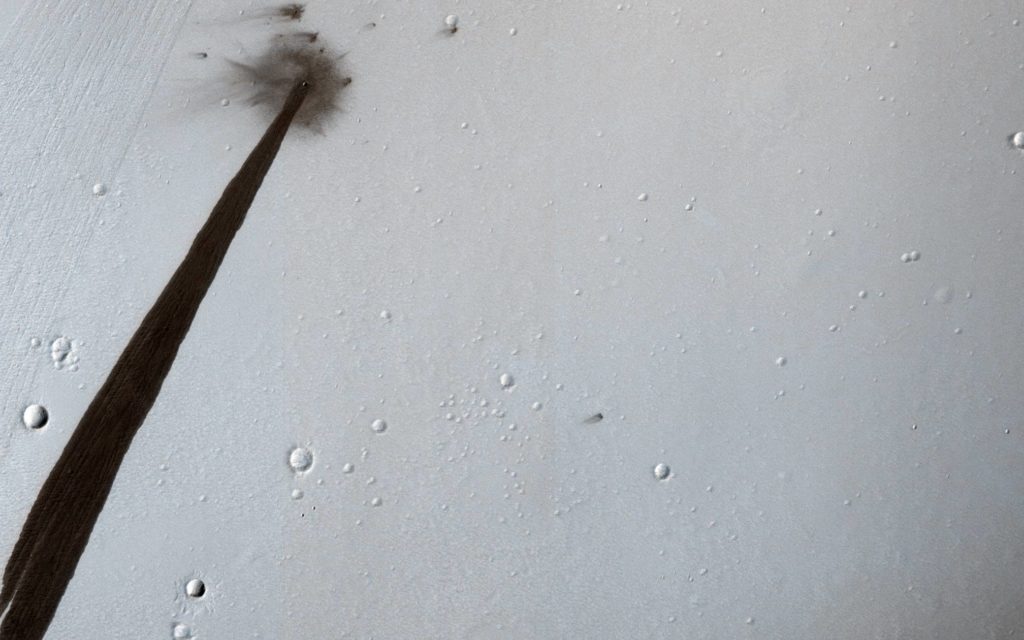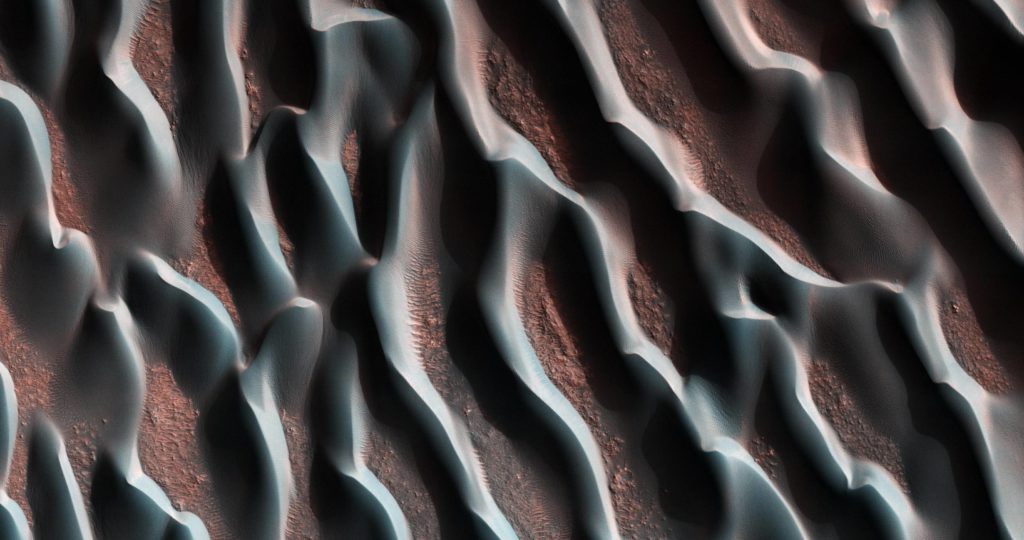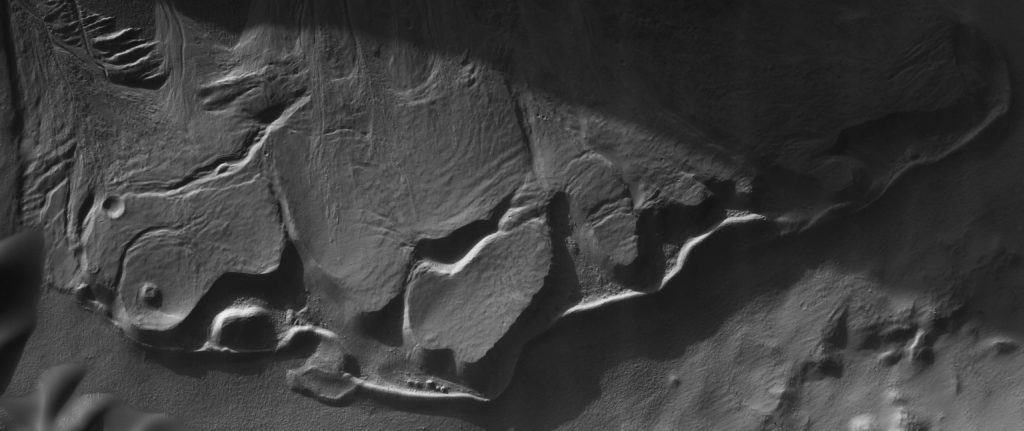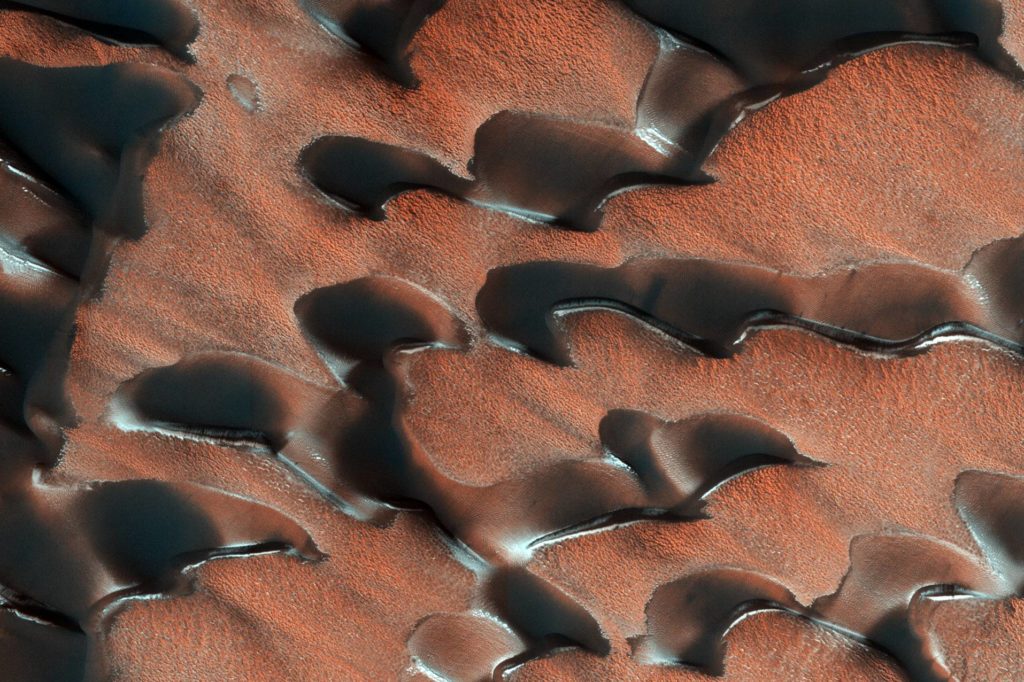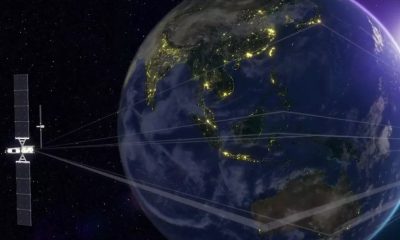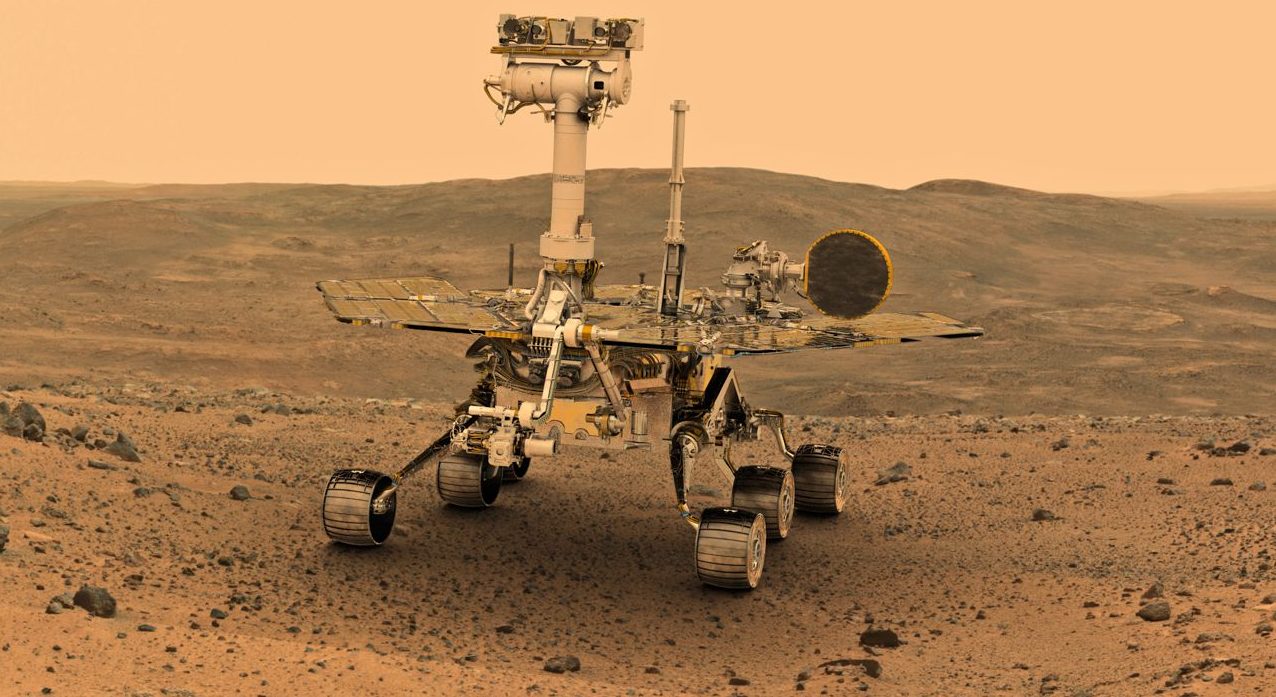

News
NASA orbiter captures beauty of Mars as global storm forces rover hibernation
Although NASA’s 14-year old Opportunity rover is currently trapped in a state of low-power hibernation in an effort to weather a record-breaking global dust storm encompassing Mars, the agency’s equally venerable Mars Reconnaissance Orbiter (MRO) – now in its 12th year of operations – remains a stoic overwatch and witness to the struggles of its land-locked companions.
Although MRO may be nearing its teenage years in orbit around the Red Planet, the Lockheed Martin-built spacecraft is currently the backbone of Mars-Earth communications, acting as a critical relay between the Curiosity and Opportunity rovers on the planet’s surface and its Earthly operators that are several tens of millions of miles distant. Thankfully, the European ExoMars Trace Gas Orbiter (TGO) and NASA’s new MAVEN orbiter are able to augment MRO’s communications capabilities in the event that problems arise with the old spacecraft, as well as the even older 2001 Mars Odyssey, an orbiter launched in 2001, a name inspired by fantasy/science-fiction film 2001: A Space Odyssey.
- A rendering of MRO, antenna and camera at the ready. MRO is a vital communications relay for rovers like Opportunity and Curiosity. (NASA/HiRISE)
- Extraordinary patterns are par for the course when dealing with Martian terrain. A polar ice cap’s many layers are pictured here. (NASA/HiRISE)
- The Mars Exploration Rover (also known as Opportunity) prepares for launch in 2003. Oppy may be small, but the rover has remained functional and still roves Mars more than 14 years after it landed on the Red Planet. (NASA)
Aside from its currently unmatched communications relay capabilities, MRO’s second science mission is mentioned in its name – reconnaissance. Enter HiRISE (High-Resolution Imaging Science Experiment), by far the most capable imaging system to ever orbit another planet, and funnily enough even more capable than Earth-bound imaging satellites as a result of its ability to stably remain in extremely low Martian orbits, thanks to the planet’s low gravity and minimal atmosphere. MRO and its HiRISE imaging hardware currently orbit Mars at an average altitude of roughly 175 miles (280 km) and are able to take photos with a resolving power upwards of 30 centimeters per pixel (0.3m/px), whereas the absolutely best and fully-dedicated Earth imaging satellites are currently limited by a combination of physics and technological complexity to roughly 50 centimeters per pixel (0.5m/px).
- An overview of the terrain surrounding the blue dune. (NASA/HiRISE)
- And the blue dune itself, captured a few months prior in 2017. (NASA/HiRISE)
As a result, HiRISE has produced some of the highest-resolution (if not the outright best) photos of an extraterrestrial body of any spacecraft to leave Earth orbit. Although an inherent delay in data collection and image processing means that no images have been published by HiRISE since Mars was enveloped in a global dust storm in June 2018, images from late 2017 and early 2018 serve to emphasize the staggering beauty and variety of the many landscapes Mars has to offer. Perched miles above, MRO may once again hear from the beleaguered rover Opportunity (as the dust storm subsides over the coming weeks and months, allowing appreciable quantities of sunlight to grace the rover’s solar panels and bring it back to life from its state of indefinite slumber.
In the meantime, we can try to appreciate the awe-inspiring, austere beauty of Mars, from its vast poles of water and carbon dioxide ice and bright blue sand dunes to its sprawling mazes of chaos terrain.
- After being struck by a small meteor, a Martian hill experiences a dramatic landslide, known as slope lineae.And the blue dune itself, captured a few months prior in 2017. (NASA/HiRISE)
- Some of many thousands of wild, massive dunes spread across the surface of Mars. (NASA/HiRISE)
- Intense lave flows make for an alien Martian landscape, August 2017. (NASA/HiRISE)
- Another extraordinary Martian dunescape, captured by HiRISE in November 2017.And the blue dune itself, captured a few months prior in 2017. (NASA/HiRISE)
News
Tesla Robotaxi has already surpassed Waymo in this key metric
Tesla Robotaxi has already overtaken Waymo in Austin in one key metric, but there’s still more work to do.

Tesla Robotaxi has already surpassed Waymo in one extremely important key metric: size of service area.
Tesla just expanded its service area in Austin on Monday morning, pushing the boundaries of its Robotaxi fleet in an interesting fashion with new capabilities to the north. Yes, we know what it looks like:
🚨 Tesla’s new Robotaxi geofence is…
Finish the sentence 🥸 pic.twitter.com/3bjhMqsRm5
— TESLARATI (@Teslarati) July 14, 2025
The expansion doubled Tesla Robotaxi’s potential travel locations, which now include the University of Texas at Austin, a school with over 53,000 students.
The doubling of the service area by Tesla has already made its travel area larger than Waymo’s, which launched driverless rides in October 2024. It became available to the public in March 2025.
According to Grok, the AI agent on X, Tesla Robotaxi’s current service area spans 42 square miles, which is five square miles larger than Waymo’s service area of 37 square miles.
Tesla Robotaxi (red) vs. Waymo geofence in Austin.
Much can be said about the shape… but the Robotaxi area is now ~3.9 mi² (10 km²) larger than Waymo’s!! pic.twitter.com/dVfh2ODxJC
— Robin (@xdNiBoR) July 14, 2025
The service area is one of the most important metrics in determining how much progress a self-driving ride-hailing service is making. Safety is the priority of any company operating a ride-hailing network, especially ones that are making it a point to use autonomy to deploy it.
However, these companies are essentially racing for a larger piece of the city or cities they are in. Waymo has expanded to several different regions around the United States, including Arizona and Los Angeles.
Tesla is attempting to do the same in the coming months as it has already filed paperwork in both California and Arizona to deploy its Robotaxi fleet in states across the U.S.
As the platform continues to show more prowess and accuracy in its operation, Tesla will begin to expand to new areas, eventually aiming for a global rollout of its self-driving service.
News
Tesla Megapacks arrive for massive battery replacing coal plant
Tesla Megapacks have started arriving on-site to the Stanwell Battery Project, just as Queensland prepares to wind down the Stanwell coal plant.

The first of over 300 Tesla Megapacks have arrived to the site of a massive battery energy storage system (BESS) being built in Australia, dubbed the Stanwell Battery Project after a coal plant it’s set to replace.
In a press release last week, the Stanwell Battery Project announced that the first Tesla Megapack 2XL units had arrived to the site, which is located outside of Rockhampton in Queensland, Australia. The project will eventually feature 324 Megapack units, set to arrive in the coming months, in order to support the 300MW/1,200MWh battery project.
“The Stanwell Battery is part of the diversification of our portfolio, to include cleaner and more flexible energy solutions,” said Angie Zahra, Stanwell Central Generation General Manager. “It is just one part of the 800 MW of battery energy storage capacity we have in our pipeline.
“Capable of discharging 300 MW of energy for up to four hours (1,200 MWh), our mega battery will be one of the largest in Queensland.”

Credit: Stanwell
Did you know Tesla’s Lathrop facility churns out a Megapack every 68 minutes? That’s enough energy to power 3,600 homes for an hour per unit! ⚡️ pic.twitter.com/bG6fpHkB9O
— TESLARATI (@Teslarati) June 11, 2025
READ MORE ON TESLA MEGAPACKS: Tesla Lathrop Megafactory celebrates massive Megapack battery milestone
The state is working with government-owned company Yurika to facilitate construction, and the process is expected to create roughly 80 jobs. The project is expected to come fully online in May 2027, with initial commissioning of the Megapacks aiming for November 2025.
The Stanwell Battery is set to replace the nearby Stanwell coal generation plant, which the government is planning to wind down starting in 2026 as part of efforts to reach an 80 percent renewable energy generation ratio by 2035. Meanwhile, the government is also set to begin winding down the Tarong and Callide coal plants, while several other Megapack projects are being built or coming online. o ya
Tesla currently has two Megapack production facilities, located in Lathrop, California, in the U.S. and another that came online earlier this year in Shanghai, China. The Shanghai Megafactory shipped its first units to Australia in March, while both factories are expected to be capable of producing 10,000 Megapack units per year upon reaching volume production.
News
The Tesla Diner is basically finished—here’s what it looks like
The company first broke ground on the Diner, Drive-in, and Supercharger location in September 2023. Now, it has served one of its first internal customers.

Tesla has finally completed the construction of its highly anticipated Diner, Drive-in, and Supercharger in Los Angeles, and recent photos of the interior’s “retro-futuristic” style are making their way around the internet.
X user Brad Goldberg shared photos from the Tesla Diner site last Tuesday, depicting some of the Supercharger stalls, indoor and outdoor seating areas, multiple neon lights, and even an Optimus robot. Goldberg also noted that there had been a “flurry of activity on site” while he was snapping the photos last week, suggesting that the restaurant location could be getting close to opening.
The Tesla Diner also served one of its first internal customers in the past few days, as Elon Musk posted on X on early Monday morning that he had just finished up eating a meal at the site:
I just had dinner at the retro-futuristic Tesla diner and Supercharger.
Team did great work making it one of the coolest spots in LA!
The photos also show that the site is pretty much done, with some of them even showing vehicles charging at the charging stalls.
You can see some of the latest photos of the Tesla Diner below.

Credit: BradGoldbergMD | X

Credit: BradGoldbergMD | X

Credit: BradGoldbergMD | X

Credit: BradGoldbergMD | X

Credit: TeslaKing420 | X

Credit: TeslaKing420 | X

Credit: Brad Goldberg (via Sawyer Merritt on X)

Credit: Brad Goldberg (via Sawyer Merritt on X)

Credit: Brad Goldberg (via Sawyer Merritt on X)

Credit: Brad Goldberg (via Sawyer Merritt on X)

Credit: Brad Goldberg (via Sawyer Merritt on X)
READ MORE ON TESLA’S LA DINER: Tesla readies Drive-In Diner Supercharger for launch with app inclusion
When will the Tesla Diner open to external customers?
While it’s still not open to external customers yet, the news again suggests that the company could be close to an official opening date. Tesla first broke ground on the Diner in September 2023, after receiving a wave of building permit approvals throughout that year. Teslarati also covered much of the construction progress throughout last year, including when crews installed the first and second drive-in screens.
Located at 7001 West Santa Monica Boulevard, the idea was first discussed in 2018 by Musk and a few others on Twitter, featuring 1950s rock and roll, waiters on roller skates, and drive-in movie theater screens playing clips from some of history’s best movies. Notably, the photos of the front doors also show that the site will be open 24 hours a day, 7 days a week, whenever it does end up opening.
Tesla’s progress on Supercharger with diner, drive-in seen in aerial footage
-

 Elon Musk2 weeks ago
Elon Musk2 weeks agoTesla investors will be shocked by Jim Cramer’s latest assessment
-

 News2 days ago
News2 days agoTesla debuts hands-free Grok AI with update 2025.26: What you need to know
-

 Elon Musk4 days ago
Elon Musk4 days agoxAI launches Grok 4 with new $300/month SuperGrok Heavy subscription
-

 Elon Musk7 days ago
Elon Musk7 days agoElon Musk confirms Grok 4 launch on July 9 with livestream event
-

 News1 week ago
News1 week agoTesla Model 3 ranks as the safest new car in Europe for 2025, per Euro NCAP tests
-

 Elon Musk2 weeks ago
Elon Musk2 weeks agoxAI’s Memphis data center receives air permit despite community criticism
-

 News4 days ago
News4 days agoTesla begins Robotaxi certification push in Arizona: report
-

 Elon Musk2 weeks ago
Elon Musk2 weeks agoTesla scrambles after Musk sidekick exit, CEO takes over sales

